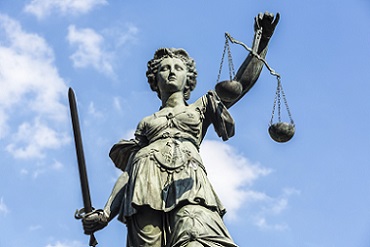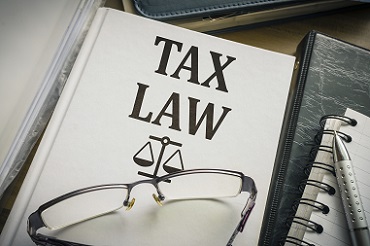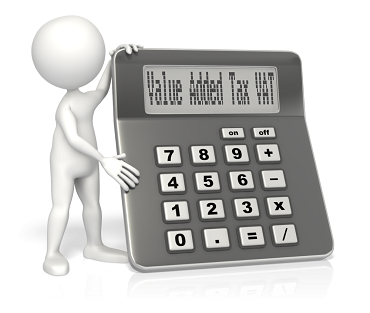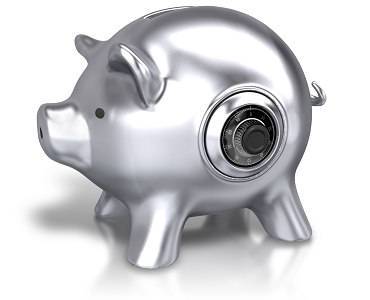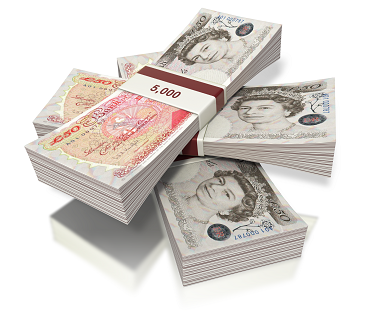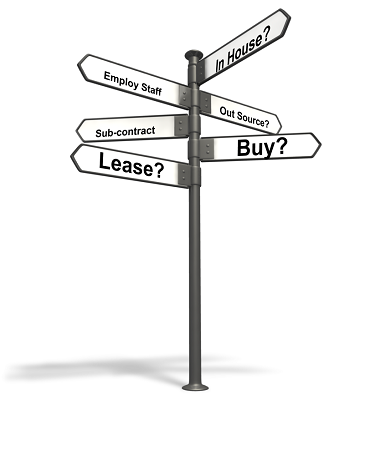Use 'Print preview' to check the number of pages and printer settings.
Print functionality varies between browsers.
Printable page generated Saturday, 22 November 2025, 5:00 AM
Small business responsibilities
Introduction
Welcome to the Starting your small business course where you will look at the responsibilities of small business owners. This section will take approximately three hours to complete.
Once completed you will have the opportunity to obtain the ‘Small business responsibilities’ badge. In this section, you will:
- look at the legal responsibilities of running a small business in the UK
- look at the essentials of business finance
- explore some of the options in resourcing a small business
- apply these ideas to real life situations
- establish the responsibilities and resourcing options for your business idea.
To help you along the way, there are a number of activities which will help you reflect on and understand what you have been learning within this section, and how you can apply these new skills and knowledge for yourself.
Learning outcomes
By completing this section and the associated quiz, you will be able to:
understand the key responsibilities of a small business owner
understand the ways in which a small business owner can make money from a business.
1 A business owner’s responsibilities
As a small business owner you will have certain legal responsibilities. The responsibilities vary depending on the sort of business structure the business has.
Try this activity to see if you can identify the key responsibilities for the sole trader and the director of a limited company.
Activity 1
The activity has 15 statements, seven are true for the sole trader and eleven are true for the director of a limited company.
See if you can get them all correct, if not you can review the answers to see the correct ones.
Comment
Some key points from the table
- The sole trader is responsible for all the business costs and expenses, just as if they were their personal costs and expenses.
- The director is not personally responsible for the business expenses.
- You will notice that neither the sole trader nor the director are required to retain an accountant. It may well be a good idea, but it is not a legal requirement.
- Both the sole trader and the director must register for and submit self-assessment tax returns (an accountant can also do this for them).
- Both the sole trader and the director must register for, and charge VAT if the business turnover reaches the threshold.
- The sole trader would normally pay Class 2 and Class 4 national insurance; this is not necessarily the case for the director or those past retirement age.
- The director has responsibilities to the other shareholders (if there are any) and must run the business in a specific way as set out in the ‘articles of association’. These are instructions on how meetings should be run and how decisions should be made in the business.
Here we have looked at just two of the responsibilities of particular traders. More detail on these responsibilities and the responsibilities of other business owners can be found on the government website.
2 Financial terms
When running a small business it is essential to understand key accounting and finance terms.
We will start by seeing what you know already.
Activity 2
Try this short activity with two questions. In the first question we ask you to match finance terms with the definition. In the second question we ask you to complete the statements about VAT by selecting the most appropriate options from the drop-down lists.
Don’t worry if you get these wrong, you can see the correct answers by reviewing the quiz at the end and we do explore these ideas further later.
Comment
Did you notice the differences between gross profit, net profit and turnover?
These terms are often confused but they are important when making decisions moving forward, we will explore these further when we look at our case studies.
Was there anything about VAT that surprised you? Did you know that the flat rate scheme existed and that it could be used by any business with a turnover less than £150,000 (figure accurate at time of writing, the HMRC website will give the most up to date figures for this).
2.1 Value added tax (VAT)
VAT is very complicated and rather than try to explain it in detail here we wanted to make you aware that it is something to consider. You may well feel it is worth obtaining professional advice in this area to avoid mistakes. There is a lot of guidance available at the HMRC website.
2.2 Flat rate VAT – a simplified arrangement for UK small businesses
The flat rate scheme assumes a certain percentage of a UK business turnover should be claimed back since VAT registered businesses do not pay VAT on certain purchases, so rather than keeping complicated VAT receipts a small business keeps back a portion of the VAT paid by customers instead of claiming VAT back. The percentage that is retained depends on the industry the business operates in.
These comments are only applicable in the UK. If you are not studying this course in the UK we suggest you research the rules on VAT in your host country.
The flat rate scheme figure is set depending on the type of product or service being provided.
For example, our case study Turn-it-round is VAT registered. At the time of writing, the flat rate scheme figure for business services is 12%. So if a customer were to be charged £100 for a session, they would pay £100 + 20% VAT which is £120.
Turn-it-round would work out the VAT (based on the total paid) £120 x 12% = £14.40 which is then paid to the HMRC in the quarterly return.
So Turn-it-round would get £5.60 to balance out the VAT that would have been paid. This means Turn-it-round would not need to keep VAT receipts for all the goods and services purchased.
The table with current scheme values can be found at: https://www.gov.uk/ vat-flat-rate-scheme/ how-much-you-pay
3 An example of business accounts
We will now continue the Bike-a-lot example, this is not intended to be an accountancy lesson, rather we are using basic figures to make some simple points.
We will look at Bike-a-lot’s’s finances to demonstrate turnover, gross profit and net-profit. (To open the case study in a new tab on a PC, hold down the Ctrl key when clicking.)
Last year Bike-a-lot sold training and tests for £80,000.
The fuel costs for the bikes came to £4000.
The certificate and exam fees came to £6000.
Other expenses, loan for the bikes, rent on premises, insurance and advertising came to £10,000.
Bike-a-lot is not VAT registered.
So the calculations are shown in Table 1.
| Turnover | The total sales revenue not including any VAT. This is the amount of money received from customers. | £80,000 |
| Gross profit | The total sales revenue taking off the cost of sales, which in this case is the cost of the fuel for the lessons and the certificates and tests that are paid for: £80,000 − £4000 − £6000. | £70,000 |
| Net profit | This is the amount of money left after everything has been paid. So this is the gross profit minus the expenses and other costs. £70,000 − £10,000. This is the amount of money the two trainers can split. It must be entered on their individual tax returns. | £60,000 |
Bike-a-lot has a turnover of £80,000, this is just below the VAT threshold of £82,000 (correct at time of writing) so Bike-a-lot does not have to be VAT registered. What do you think would happen if the sales revenue increased by £2000 and put it into the category for mandatory VAT registration?
Bike-a-lot and VAT
Bike-a-lot operates in quite a competitive market. A typical compulsory basic training course (CBT), the first step to riding, costs around £100. If the turnover for Bike-a-lot increased to put it over the VAT threshold, then they would have to charge VAT at 20% (correct at time of writing). So the cost of the CBT would have to increase to around £120 for Bike-a-lot to make the same gross profit. For a private customer this is a relatively high increase in cost for no extra service and could result in a different training school being chosen.
So the VAT question plays a big part when the small business serves local customers.
Would you suggest they stop working once the turnover reaches £81,999?
Now it is your turn, have a look at the finances for case study 5, Turn-it-round. (To open the case study in a new tab on a PC, hold down the Ctrl key when clicking.)
Activity 3
Use the simplified accounts figures to work out the turnover, gross profit and net profit for Turn-it-round.
- Last year Turn-it-round received funding totalling £147,000 to support 300 prisoners.
- The transport costs for the sessions came to £8000.
- The cost of renting venues for training and seminars came to £12,000.
- Other expenses, staff costs, insurance, general travel and hotel expenses for staff and volunteers, came to £120,000.
- Turn-it-round is registered for VAT on the flat rate scheme paying 12% VAT.
Complete the table and comment on the VAT situation.
| Measure | Explanation | Amount |
| Turnover | ||
| Gross profit | ||
| Net profit* | ||
| VAT comment | ||
Footnotes
* Remember that money from the flat rate scheme is part of the net profit.Comment
Here are our thoughts.
| Measure | Explanation | Amount |
| Turnover | The total amount of funding received is £147,000 before VAT, so this is the turnover. | £147,000 |
| Gross profit | The cost of running the sessions is the transport costs of £8000 and the venue hire of £12,000. The specific activity expenses are not broken down so the gross profit is £147,000 – £20,000. | £127,000 |
| Net profit | Because the staff are paid salaries, business owner, Charlie, gets money this way, the salaries are expenses. So the net profit is £127,000 – £120,000 = £7000. You also add in the money retained from the VAT flat rate scheme £8232. | £7,000 + £8232 |
| VAT comment | The flat rate scheme assumes a certain percentage of a business turnover should be claimed back as tax. If the flat rate scheme rate is 12%: The funding would be £147,000 + 20% = £147,00 + £29,400 The VAT bill would be £176,400 × 12% = £21,168 Leaving £8232 contribution to the business. NB as you can see the VAT figures are large and many businesses get into trouble because the customer did not realise that VAT was payable. Imagine if the funding was inclusive of VAT but business owner Charlie had not realised this. Turn-it-round would have to pay HMRC £147,000 × 12% = £21,168. There would not be enough money to pay this out of the £7000 profit, it would result in a £15,000 loss. | |
Don’t worry if this is still confusing, we are not trying to get you to calculate your own VAT. In the comments we suggested what would happen if Turn-it-round had a simple misunderstanding over VAT, a £7000 profit turned into a £15,000 loss. The message is: be clear on what VAT commitments there are and make sure the customer knows if they need to pay VAT. This is a particular issue when quoting services for clients. This is one area where expert help could be really beneficial.
4 Taking money out of a business
The main, but not only, reason an individual starts a small business is to provide income of some sort.
We will now look at the different ways money can move out of a business to the owner. We will use the case study examples of sole trader, partnership and the director of a limited company, as examples. (To open the case study in a new tab on a PC, hold down the Ctrl key when clicking.)
Sole trader: Mucky Pets
As a sole trader, Alex can make drawings from the business. This is because there is no distinction between Alex and the business for tax purposes. Alex submits a self-assessment tax return which includes a section in the tax return for sole trader income.
It makes sense for Alex to have a separate bank account for the business and a personal one, so that it is easy to see where the income and expenses for the business sit. With just one bank account, Alex would need to separate the figures manually. Alex pays tax on the profits made in the business.
Alex must remember to pay national insurance contributions as a self-employed person and remember that all taxable profit from the sole trader business makes must be included in the self-assessment tax return as taxable income, even if Alex does not withdraw the entire profit amount into a personal bank account.
Partnership: Bike-a-lot
If Bike-a-lot is structured as a partnership, Nicky and partner pay themselves in a similar way to that of a sole trader. They must discuss this and ensure that the way the funds are drawn are in line with the rights specified in their partnership agreement (as each partner has a right to the funds). A separate tax return is submitted for the partnership but the partnership does not pay any tax. The tax is paid in the personal tax returns for the partners – each pay tax in their personal tax return on the share of the partnership profit that each receive.
Limited company: JJ Components
Now it gets a little trickier.
JJ Components is treated as a separate entity to JJ, even though JJ is the only shareholder. The company submits a separate tax return and pays any tax due. JJ submits a self-assessment tax return. JJ cannot just take money out of the company.
JJ could set up as an employee of the company and get paid a wage. JJ will need to pay the correct income tax and national insurance contributions. JJ will also need to be paid a work place pension in the near future. This is just the same as if JJ worked for any other company.
In addition, as a shareholder of the company JJ is able to take money out of the company through payment of a dividend. When it comes to paying a dividend, it is simply a distribution of profits and tax is paid through the self-assessment tax return.
An accountant would tell JJ the most beneficial split between salary and dividends.
Some key points for the limited company
Salary
- Any salary paid will attract national insurance contributions and income tax payments.
- To pay a salary, the company must be set up as an employer.
- Salaries are deducted from the company profits and so reduces the amount of corporation tax paid.
- In the near future all employers must provide a work place pension, even if they only employ one employee.
Dividends
- Can only be paid out of company profits after corporation tax is paid.
- Do not attract national insurance contributions.
- Are taxed through the individual’s self-assessment tax return.
5 Running the business: some choices
We will now look at some of the options and choices businesses face in how they operate.
In this activity formulate your first thoughts, you can then see if your views change after reading the rest of the section.
Activity 4
Consider these three options and how they might apply to a small business, what are the benefits and concerns of:
- do it yourself (in-house)
- buy the service from someone else (outsource)
- employ staff part or full time
- use external people such as associates or sub-contractors
- buy equipment outright
- lease equipment.
Now for each of these six options give your immediate reaction to the benefits and concerns.
| Option | Benefits | Concerns |
| Do it yourself | ||
| Outsource | ||
| Employ staff | ||
| Use external people | ||
| Buy equipment | ||
| Lease equipment |
We will not give our comments here, rather we will discuss some of the decisions that could be made by our five businesses and then let you see if your views have changed.
5.1 Choices to be made
Read through these additional points for our five case studies, note how they approach the six options you have just reviewed.
Bike-a-lot
- The partners at Bike-a-lot are expert trainers and computer literate, and whilst they could create a website, the time it would take would be excessive. Also since the website is the main point for booking and payment then the extra confidence of using an IT expert is well worth the money.
- The partners at Bike-a-lot considered leasing the motorcycles for the training but the high mileage they expected to cover and the additional insurance premiums meant that the monthly cost of a business loan was significantly lower than the leasing costs.
- Bike-a-lot do not employ staff but have a number of associates who can be used at times of high volume or to cover holidays or sickness.
- The partners do lease the storage and training facility. They have a small unit on an industrial estate. The cost of buying a training facility was prohibitive and would take more than ten years to recoup the extra costs over leasing.
JJ Components
- JJ did not have a choice over leasing the manufacturing equipment. With it being specialised equipment, made to order, therefore purchasing was the only option.
- JJ leases an industrial unit just outside the town. The leasing is a great option as this allows for the business to expand and move more easily than property that is purchased.
- JJ employs two assembly technicians. In a business where quality is paramount, there is a need for a consistent and skilled workforce.
- JJ uses an accountant to deal with his payroll and all reporting. The cost of the accountant is only £100 per month and frees JJ to concentrate on the main tasks of the business.
Mucky Pets
- The equipment Alex uses is fairly low cost, the largest expense was the workshop in the garden which was purchased outright.
- In the future Alex is considering going mobile and leasing a van for this purpose, this would be a good option.
- Alex does not currently employ anyone but as the business grows then Alex is considering taking on an apprentice to train and support through the grooming qualifications.
Red Bush Brewery
- At Red Bush Brewery, Sam is fairly reliant on the master brewer. The one full time employee. Whilst Sam is happy to learn the business and support the brewer, gaining the skills and experience to run the brewery alone is not feasible in the short term.
- Sam is fortunate to have the farm buildings provided free of charge and bought the second hand equipment at a low price.
- Because Sam has farm duties in addition to supporting the brewer, it makes sense to outsource the marketing and website for the brewery. A local admin firm is used and they also arrange for casual labour to cover farmer’s markets, if Sam is not available.
- Sam uses the farm accountants to look after the payroll, getting a really good rate as part of the family farm.
Turn-it-round
- Charlie uses Turn-it-round as a way of employing ex-prisoners. The turnover of staff is quite high, with staff typically staying with the business for between nine and twelve months, but this suits Charlie well. The staff are recruited on their release from prison and encouraged to develop skills and build relationships. Charlie sees it as a success when staff are head hunted by firms they work with.
- Turn-it-round does not have significant assets and hires venues and vehicles as required.
- The computers have been leased from a local IT company. The IT company maintains the computers and ensures the security is up to date. This was a requirement of the funding Charlie receives.
Activity 5
Go back and review the table you produced in Activity 4 earlier.
Are there any items you would change, perhaps emphasise or remove in light of the case studies?
If so, what is it that has caused the change?
Comment
What we hope you got out of this activity is a sense that there is no one right approach. The decisions on how you approach and resource your business will depend on your circumstances.
You will need to look at your skills, situation, objectives, resources, finances and ambitions before making a decision.
6 Your business
You may now like to take the ideas discussed so far and link them to your own business idea. You can do this through two activities.
- Activity 6: Create your own business case study in a similar format to the example case studies.
- Activity 7: Answer the questions for the case study you created.
Activity 6
Creating your own personal case study
Complete the case study information for a business you have recently started, are thinking of starting or have knowledge of through friends or family.
| Name of business | |
| Brief description of business and its objectives | |
| Staffing of business | |
| Business assets | |
| Essential skills | |
| Mandatory licences or insurance arrangements | |
| Expected turnover for year 1, year 2 and year 3 |
To get the most out of this course we encourage you to keep notes on the ideas you have and the activities you complete. These notes could be very useful as you move your business idea.
This particular activity is also used in the other sections of this course and may have already been completed. It is suggested that you use the same ideas for each section, though you may wish to change or develop your ideas as you go through the different sections.
Activity 7
Use the personal case study you have developed to answer the questions and suggest how you might arrange the finances and resources for the business.
| Key question | Answers | Implications | |
| What are the owner responsibilities for the business? | |||
| Is the business likely to have employees? | |||
| Should the business retain an accountant? | |||
| Should the business be registered for VAT? | |||
| What services will be outsourced? | |||
| How will the owner of the business get money from the business? | |||
| Summary | |||
7 Personal reflection
Having completed this first section we suggest you take a few minutes to reflect on what you have learned so far. You may want to save your answers in this activity (and others in this section) in a separate document for use after the course.
Activity 7
8 What you have learned in this section
- Small business owners have legal and financial responsibilities.
- The responsibilities vary with the business structure used within the business.
- VAT is complicated and its application depends on the turnover of the business.
- Getting professional help on VAT is worth considering.
- The way you get money out of a business is dependent on the business structure chosen.
- There are options on how a business should operate, the best options vary business to business.
Section 3 quiz
Well done, you have now reached the end of Section 3 of Starting your small business, and it is time to attempt the assessment questions. This is designed to be a fun activity to help consolidate your learning.
There are only five questions, and if you get at least four correct answers you will be able to download your badge for the ‘Small business responsibilities’ section (plus you get more than one try!).
- I would like to try the Section 3 quiz to get my badge.
If you are studying this course using one of the alternative formats, please note that you will need to go online to take this quiz.
I’ve finished this section. What next?
You can now choose to move on to Section 4, Succeeding in a small business, or to one of the other sections, so you can continue collecting your badges.
If you feel that you’ve now got what you need from the course and don’t wish to attempt the quiz or continue collecting your badges, please visit the Taking my learning further section, where you can reflect on what you have learned and find suggestions of further learning opportunities.
We would love to know what you thought of the course and how you plan to use what you have learned. Your feedback is anonymous and will help us to improve our offer.
- Take our Open University end-of-course survey.
References
Acknowledgements
Except for third party materials and otherwise stated in the acknowledgements section, this content is made available under a Creative Commons Attribution-NonCommercial-ShareAlike 4.0 Licence.
The material acknowledged below is Proprietary and used under licence (not subject to Creative Commons Licence). Grateful acknowledgement is made to the following sources for permission to reproduce material in this unit:
Figures
Figure 1: © Querbeet/iStockphoto.com.
Figure 2: © vchal/iStockphoto.com.
Figure 3: © cigdemhizal/iStockphoto.com.
Figures 4–9: courtesy Moore Effective Solutions Ltd.
Every effort has been made to contact copyright owners. If any have been inadvertently overlooked, the publishers will be pleased to make the necessary arrangements at the first opportunity.
Glossary
- drawings
- If a business is a sole trader or partnership basically the ‘salary’ is in fact drawings which are taken out of the business. Tax is not paid on drawings but is assessed on the profits of the business.
- gross profit
- Profit made directly on sales. Gross profit = sales − cost of goods. Does not include business expenses etc.
- net profit
- The profit after all costs, are taken into account. Net profit = sales − cost of goods − operating expenses − other expenses − interest − taxes.
- turnover
- Turnover is the amount of money taken by a business in a specified period, usually annually. It is simply a term that means the total amount of money entering the business from sales. It includes money spent on raw materials, hire equipment and subcontracting. For example, a kitchen fitter who fits a new kitchen for a client has two choices: either the client buys the kitchen for £5000 and the fitter charges £1000 to fit it (so the turnover for the fitter would be £1000); or the fitter buys the kitchen for £5000 and fits it for £1000 (so the turnover would be £6000). Even though the amount of money earned is the same, the turnover depends on who pays for the kitchen.
- VAT
- Value added tax. Currently a 20% tax applied to goods and services from VAT registered businesses.
